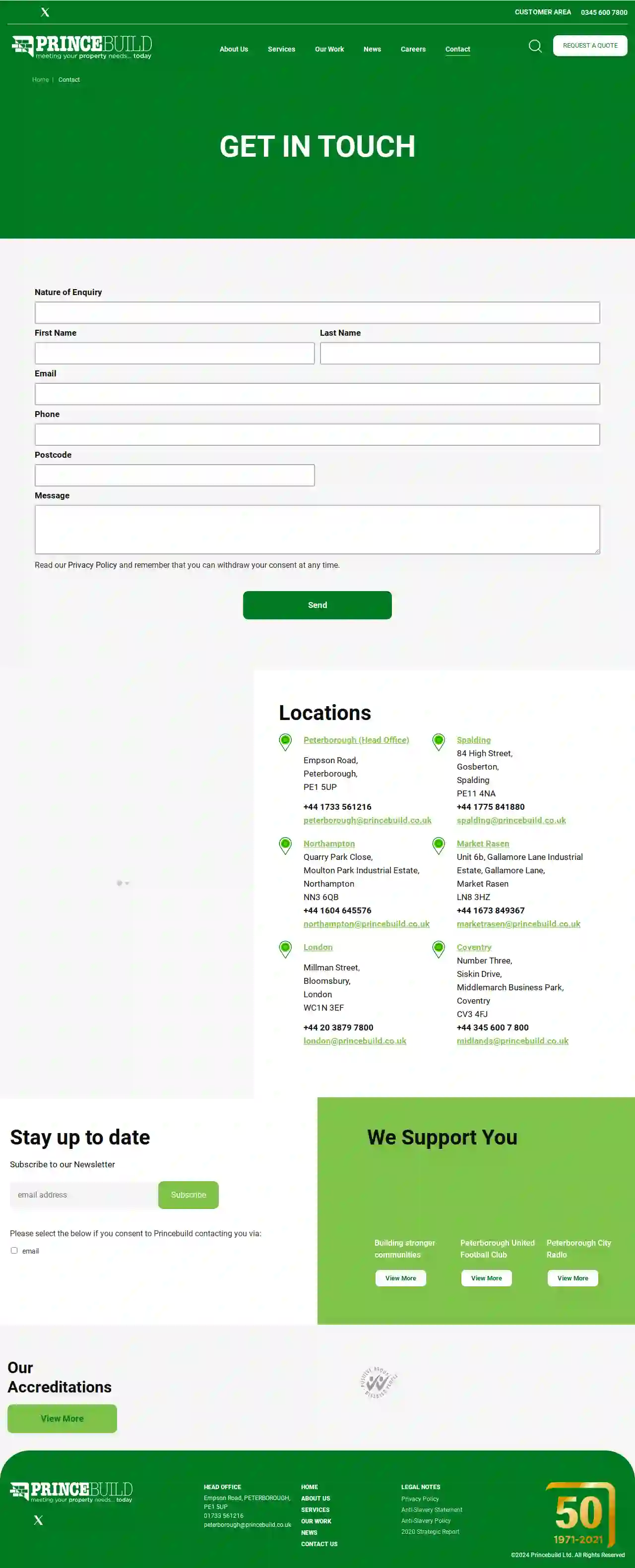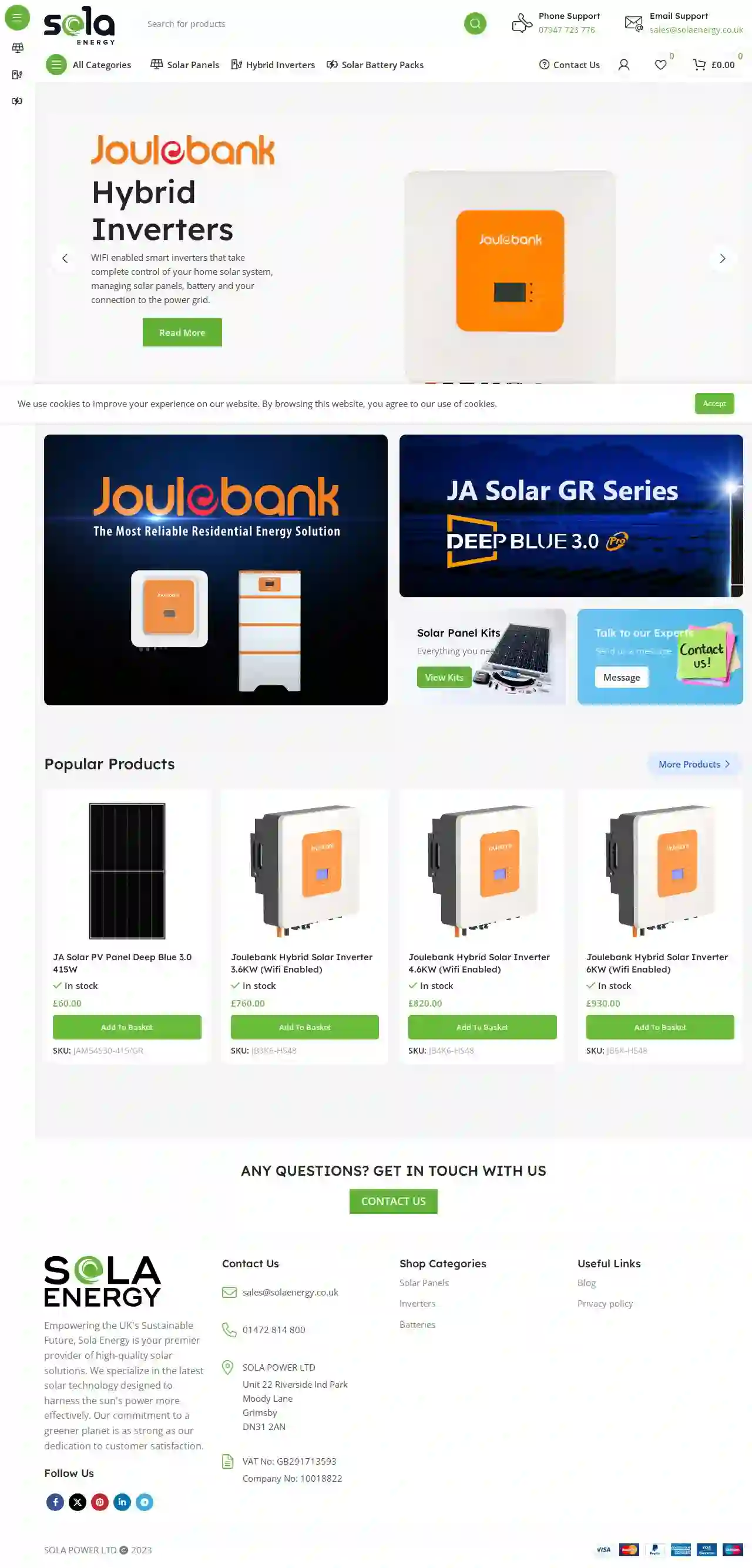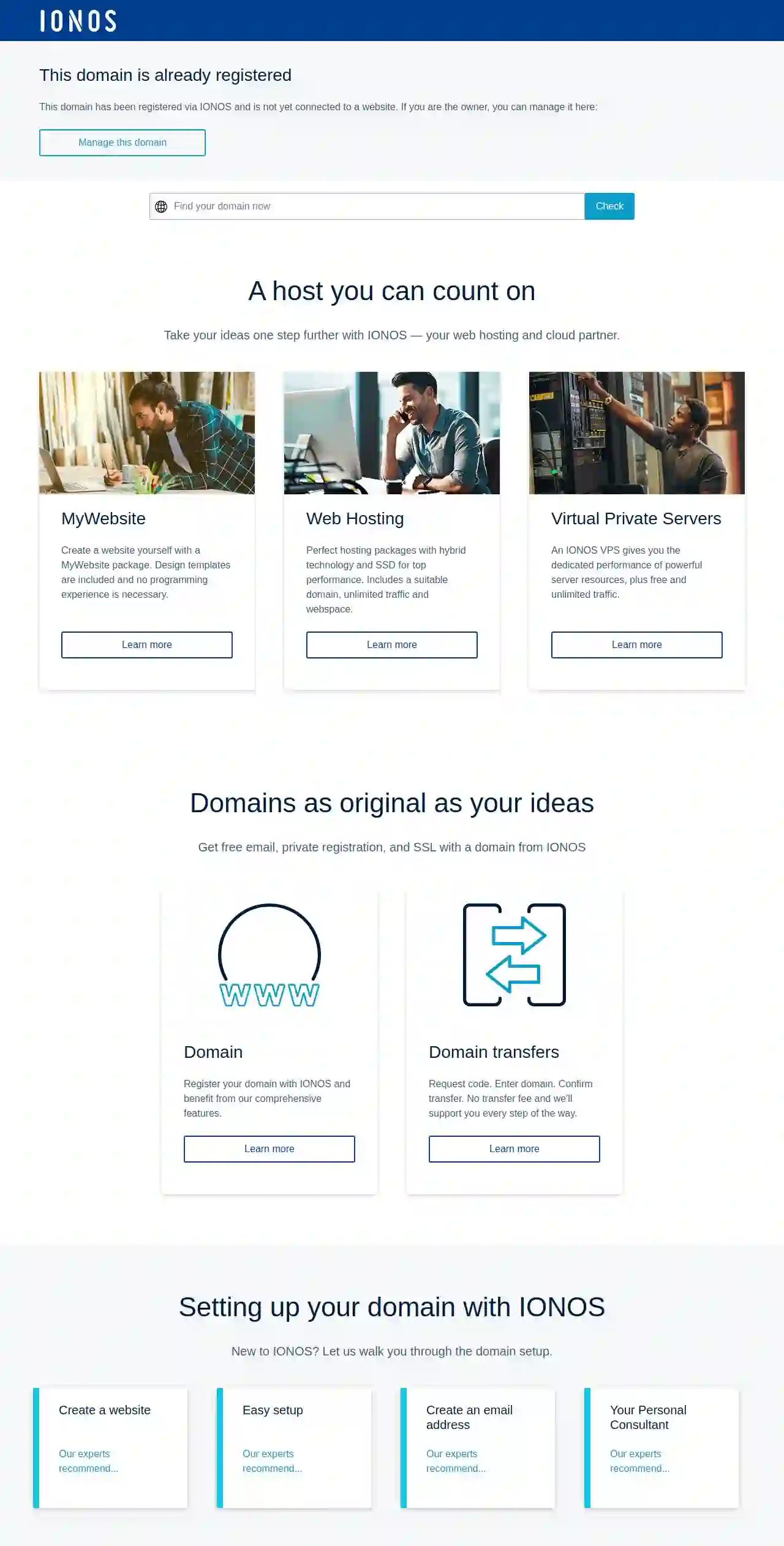Solar Installers Scartho
Best Solar Energy Company in Scartho
Receive up to 3 Solar Installer quotes for your project today! Compare profiles, reviews, accreditations, portfolio, etc... and choose the best offer.

Princeenergy
Gosberton, 84 High Street, Spalding, PE11 4NA, GBPrincebuild Limited is a family-run business that has been caring for, maintaining, and building properties since 1971. We specialise in providing a diverse range of services across the construction industry, organised into six key divisions: Construction, Small Works, Insurance, Maintenance, Building Services, and Commercial Interiors. Founded in Peterborough, where our head office remains today, we have expanded our operations to cover the entire East of England, and for larger projects, we offer a national service. We currently employ more than 220 people who help us achieve our business goals and deliver the excellent levels of service our customers have come to expect.
- Services
- Why Us?
- Gallery
Get Quote
Sola Energy
Moody Lane, Unit 22 Riverside Ind Park, Grimsby, DN31 2AN, GBEmpowering the UK's Sustainable Future, Sola Energy is your premier provider of high-quality solar solutions. We specialize in the latest solar technology designed to harness the sun's power more effectively. Our commitment to a greener planet is as strong as our dedication to customer satisfaction.
- Services
- Why Us?
- Gallery
Get Quote
YourSolar Ltd
53 reviewsLouth, LN11 8DN, GBYourSolar is one-stop shop for all your solar energy needs. We specialize in the design & installation of solar systems. YourSolar provides industry-leading solar consultations to homeowners and businesses. We will guide you throughout the entire solar process and provide you with all the necessary steps to switch to clean, renewable energy. Design - Install - Control. How we work: We will find out your energy consumption, design the best system to suit your needs & walk you through to the installation completion. Owners choose to go solar for many great reasons but one of the main reasons for making the switch to solar energy is protection against inflation and utility rate increases. Your personal Solar Expert: Our expert personal account managers approach each project with the customer’s specific needs in mind.
- Services
- Why Us?
- Our Team
- Gallery
Get Quote
Solar Panel Pigeon Proofing
Comme Court, Field House Rd, Humberston, DN36 4UL, GBPestfree Pest Control is Lincolnshire's No.1 Pest Control Company, providing fast and reliable service across the region. We are a friendly and professional team dedicated to solving your pest problems effectively and efficiently. Our services cover a wide range of pests, including insects, rodents, moles, birds, and more. We also specialize in solar panel bird proofing and cleaning. We understand that pest infestations can be stressful and disruptive, so we strive to provide a discreet and hassle-free service. Our technicians are fully trained and equipped to handle any pest problem, big or small. We use the latest techniques and products to ensure the best possible results. At Pestfree, we are committed to providing a high-quality service that exceeds our customers' expectations. We are proud to be a trusted name in pest control, and we are always happy to help.
- Services
- Why Us?
- Gallery
Get Quote
Elite Electrical Solutions
57 reviews107 Cleethorpe Road, Grimsby, DN31 3ER, GBElite Electrical Solutions is a trusted solar panel installation company based in Grimsby, Lincolnshire. We provide advanced and efficient solar technology for homes and businesses throughout North East Lincolnshire, Lincolnshire, East Ridings, Yorkshire and Nationwide. Our experienced team will help you reduce your energy costs and carbon footprint with customised solar solutions. We understand that you want your solar installation process to be as quick and hassle-free as possible. That's why our team of experts are committed to providing you with a seamless, stress-free installation experience. Our professional installation team are experienced in installing solar systems of all sizes, and we use only the highest quality materials and equipment to ensure that your installation is done right the first time. With our efficient installation process, you'll enjoy solar energy's benefits in no time. At Elite Electrical Solutions, we're committed to providing you with the best solar solutions for your home. Our team of experts have years of experience in the solar industry, and we use only the highest quality materials and equipment to ensure that you receive the best possible solar solution. Whether you're looking to reduce your energy costs, increase your home's value, or simply do your part to protect the environment, we have the perfect solar solution for you.
- Services
- Why Us?
- Gallery
Get Quote
Wolds Solar
100 Lewes Road, Brighton, Unit 10, The Business Centre, BN1 1AA, GBWold's Solar is a family-run business with over 20 years of experience in the solar industry. We are passionate about providing our customers with the highest quality solar panels and installations at competitive prices. Our team of expert engineers and installers will work with you every step of the way to ensure that your solar system is designed and installed to meet your specific needs. We are committed to providing our customers with exceptional service and support, from initial consultation to ongoing maintenance. At Wold's Solar, we believe that everyone should have access to clean, renewable energy. We offer a wide range of solar panel options to suit all budgets and requirements. Whether you are looking to reduce your energy bills, increase your home's value, or simply do your part for the environment, we have a solar solution for you. Contact us today for a free consultation and let us help you make the switch to solar power.
- Services
- Why Us?
- Accreditations
- Our Team
- Testimonials
Get Quote
Grimsby Community Energy
The Hub, Freeman St Market, Nelson Street, Grimsby, DN32 7DS, GBGrimsby Community Energy is a cooperative, run by members who are dedicated to bringing community energy projects to our local area. We develop renewable energy projects – such as our recently completed project at CATCH apprentice training centre installing 300kW of solar power. We raise awareness of the benefits of locally owned community energy. We believe in developing students, employees and volunteers. We work with the best local not for profit organisations. Our mission is to reduce energy costs and CO2 emissions through community renewable energy projects.
- Services
- Why Us?
- Accreditations
- Testimonials
- Gallery
Get Quote
Cool Energy Eco Services Ltd
51 reviews163 Cleethorpe Rd, Grimsby, DN31 3AX, GBCool Energy is a renewable energy installer who designs and installs precision renewable energy solutions across the UK. We're a pioneering team of renewable heating professionals providing commercial and domestic renewable energy solutions. Our multi-product solutions include air source heat pumps, exhaust air heat pumps, swimming pool heat pumps, heat pump cylinders, hot water cylinders, buffer tanks, solar PV, solar thermal, underfloor heating, battery storage, solar diverters, smart controls, EV chargers & more. We're building a better energy future for all. Cool Energy is committed to making the world cleaner and healthier. From development to operation, we create and operate valuable renewable projects that will benefit communities for decades.
- Services
- Why Us?
- Accreditations
- Gallery
Get Quote
Lincs Renewables Ltd
54 reviewsLincoln, GBWelcome to Lincs Renewables, Lincolnshire's family-run, trusted renewables provider. Join the 1.2 million who are protecting themselves from the energy price increase and becoming more self-sufficient. Lincs Renewables provide renewable energy solutions for domestic, commercial and agricultural properties across Lincolnshire and North East Lincs. We install solar panels, solar battery storage systems, and electric vehicle charging stations. Our team is dedicated to providing high-quality services, ensuring our customers receive long-term savings, clean energy, and low maintenance. We are a registered installer under the MCS scheme, providing our customers with the assurance that we install the expected industry level of quality and reliability on every job we undertake.
- Services
- Why Us?
- Accreditations
- Our Team
- Testimonials
- Gallery
Get Quote
Lincs Green Energy
56 reviewsGrimsby, GBAt Lincs Green Energy, we're on a mission to transform how we power our lives. With a strong focus on solar panels and renewable energy solutions, we're your trusted partners in building a sustainable tomorrow. Our commitment to cutting-edge technology and eco-friendly practices drives us to create efficient and responsible power solutions for homes and businesses alike. Join us in shaping a cleaner, greener future. Discover the potential of renewable energy with Lincs Green Energy today. Welcome to Lincs Green Energy – where passion for sustainability meets a decade of expertise! We're not just electricians; we're a team dedicated to transforming the way we power our lives. With over 10 years of experience under our belt, we've seen the energy landscape evolve, and we're excited to lead the charge towards a greener future. Our journey began with a deep understanding of how solar panels and renewable energy solutions can revolutionise homes and businesses, making them more efficient, cost-effective, and environmentally conscious. Our success is rooted in the strength of our team – a collective of professionals who share the same enthusiasm for cleaner energy alternatives. Every member is handpicked for their expertise, ensuring that each installation, from solar panels to EV charging stations, is carried out with precision and care. As homeowners ourselves, we comprehend the significance of reliable, affordable, and eco-friendly power solutions. This drives our mission to provide cutting-edge technology and personalised guidance, making sustainable energy accessible to everyone. Your home is your haven, and we're here to equip it with the latest advancements that bring comfort and cost savings, while also reducing your carbon footprint. We're more than just a service provider; we're your partners on this transformative journey. Our friendly and approachable team is here to answer your questions, customise solutions to your needs, and guide you every step of the way. From consultation to installation, we're committed to ensuring that your experience with us is nothing short of exceptional. Join us in embracing a cleaner, more sustainable future. Let's harness the power of solar panels and renewable energy solutions to create a world where efficiency and environmental consciousness go hand in hand. We invite you to be a part of our story and make your mark on the path to a greener tomorrow.
- Services
- Why Us?
- Gallery
Get Quote
Over 3,485+ Solar Installers registered
Our solar providers operate in Scartho & beyond!
SolarCompaniesHub has curated and vetted the Best Solar Installers in Scartho. Find a reliable contractor today.
Frequently Asked Questions About Solar Installers
- Keep Panels Clean: Clean panels periodically to remove dirt, debris, and bird droppings, which can reduce efficiency. Rainfall usually cleans panels adequately, but you might need to hose them down occasionally.
- Visual Inspections: Regularly inspect panels for signs of damage, loose wiring, or other issues.
- Professional Maintenance: Consider having a professional solar installer inspect your system every few years to ensure optimal performance.
- Tax Credits: Reduce your income tax liability based on the cost of your solar system.
- Rebates: Direct cash payments or discounts on the purchase of a solar energy system.
- Net Metering: Allows you to sell excess solar electricity back to the grid for credits.
- Renewable Energy Certificates (RECs): Tradeable credits representing the environmental attributes of your solar energy generation.
- Contact SolarCompaniesHub: We make it simple to connect with reputable Solar Installers in your area.
- Get Free Quotes: Request free quotes from multiple installers to compare prices, systems, and warranties.
- Schedule a Site Assessment: A qualified installer will visit your property to assess your roof, energy needs, and discuss your goals.
- Review Your Proposal and Contract: Carefully review the proposed system, financing options, and warranties before signing a contract.
- Installation and Activation: Once the contract is signed, the installer will obtain necessary permits, schedule the installation, and activate your solar system.
How do I maintain my solar panels?
What is net metering, and how does it work?
Are there any financial incentives for going solar?
How do I get started with solar panel installation?
How do I maintain my solar panels?
- Keep Panels Clean: Clean panels periodically to remove dirt, debris, and bird droppings, which can reduce efficiency. Rainfall usually cleans panels adequately, but you might need to hose them down occasionally.
- Visual Inspections: Regularly inspect panels for signs of damage, loose wiring, or other issues.
- Professional Maintenance: Consider having a professional solar installer inspect your system every few years to ensure optimal performance.
What is net metering, and how does it work?
Are there any financial incentives for going solar?
- Tax Credits: Reduce your income tax liability based on the cost of your solar system.
- Rebates: Direct cash payments or discounts on the purchase of a solar energy system.
- Net Metering: Allows you to sell excess solar electricity back to the grid for credits.
- Renewable Energy Certificates (RECs): Tradeable credits representing the environmental attributes of your solar energy generation.
How do I get started with solar panel installation?
- Contact SolarCompaniesHub: We make it simple to connect with reputable Solar Installers in your area.
- Get Free Quotes: Request free quotes from multiple installers to compare prices, systems, and warranties.
- Schedule a Site Assessment: A qualified installer will visit your property to assess your roof, energy needs, and discuss your goals.
- Review Your Proposal and Contract: Carefully review the proposed system, financing options, and warranties before signing a contract.
- Installation and Activation: Once the contract is signed, the installer will obtain necessary permits, schedule the installation, and activate your solar system.